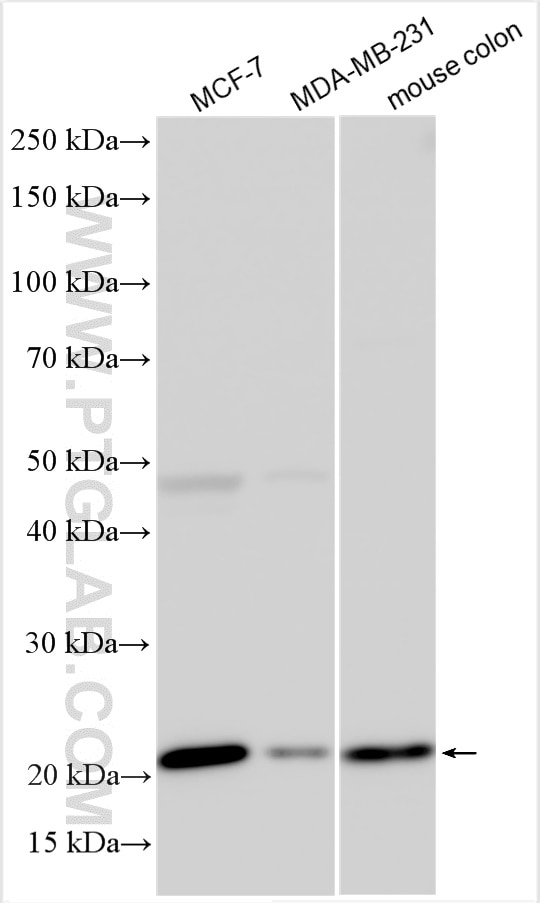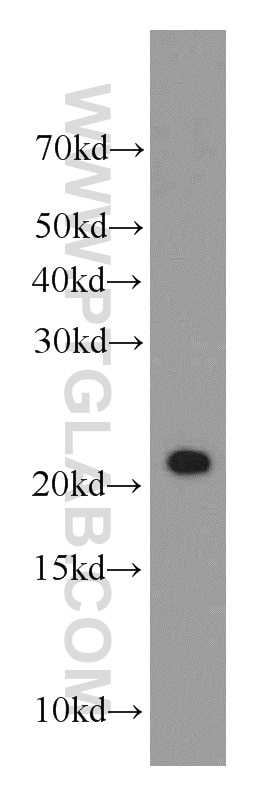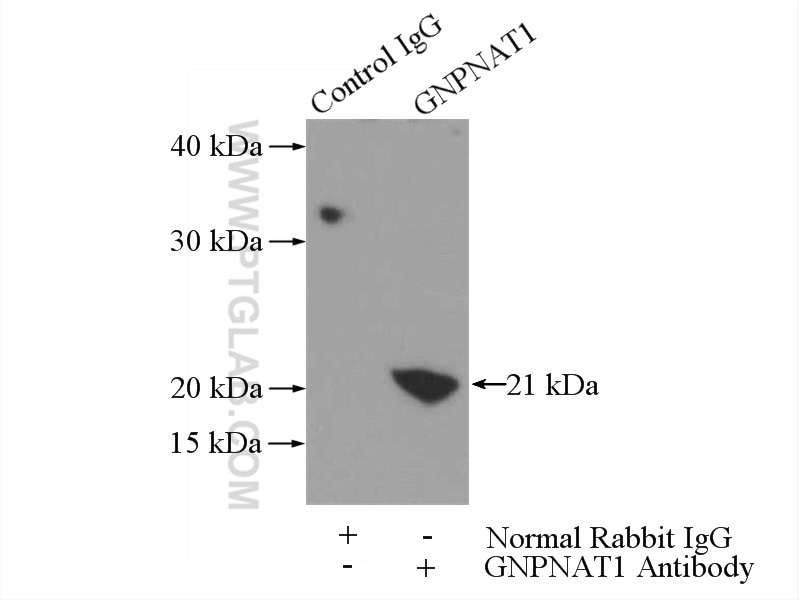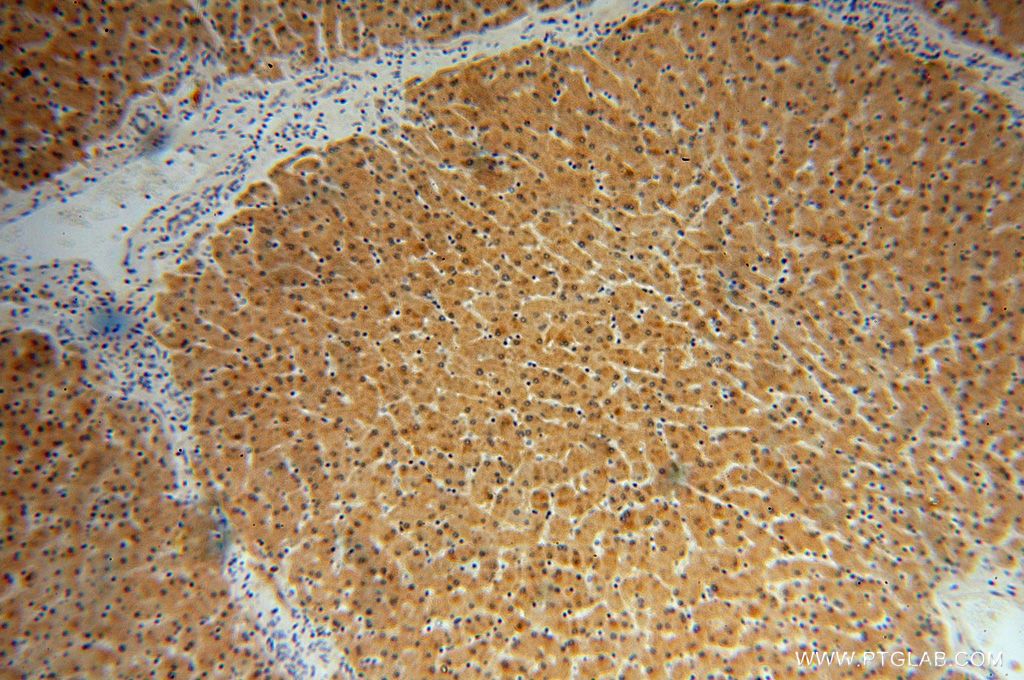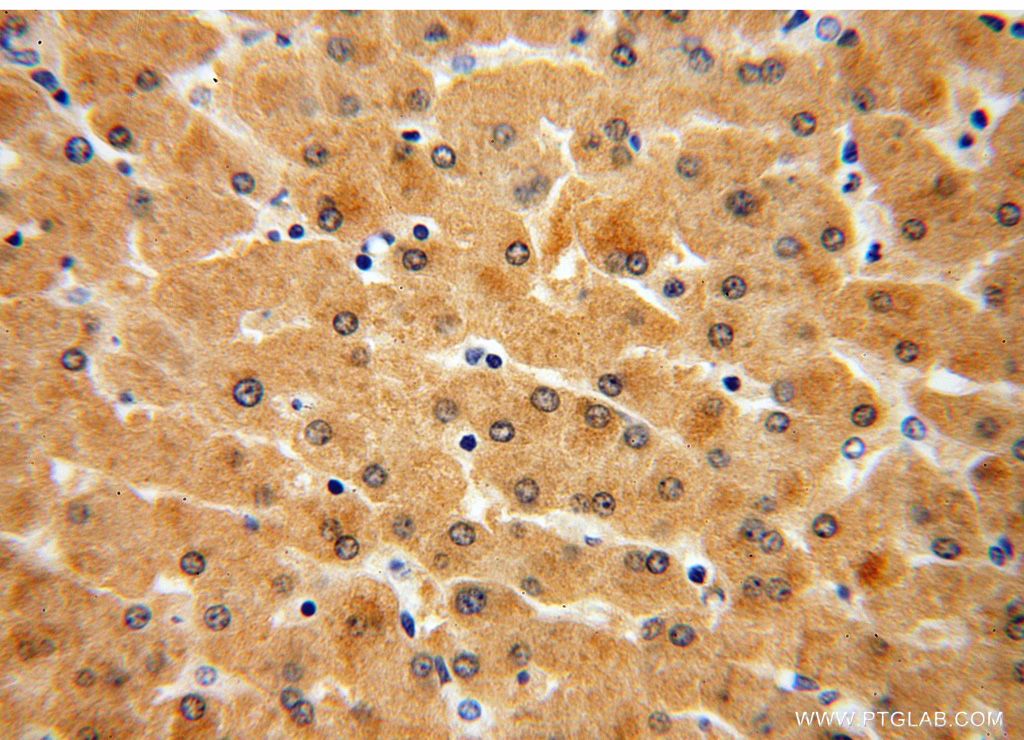- Phare
- Validé par KD/KO
Anticorps Polyclonal de lapin anti-GNPNAT1
GNPNAT1 Polyclonal Antibody for WB, IP, IHC, ELISA
Hôte / Isotype
Lapin / IgG
Réactivité testée
Humain, rat, souris
Applications
WB, IP, IHC, ELISA
Conjugaison
Non conjugué
N° de cat : 16282-1-AP
Synonymes
Galerie de données de validation
Applications testées
| Résultats positifs en WB | cellules MCF-7, cellules MDA-MB-231, tissu de côlon de souris, tissu de gros intestin de souris |
| Résultats positifs en IP | tissu de gros intestin de souris |
| Résultats positifs en IHC | tissu hépatique humain il est suggéré de démasquer l'antigène avec un tampon de TE buffer pH 9.0; (*) À défaut, 'le démasquage de l'antigène peut être 'effectué avec un tampon citrate pH 6,0. |
Dilution recommandée
| Application | Dilution |
|---|---|
| Western Blot (WB) | WB : 1:500-1:1000 |
| Immunoprécipitation (IP) | IP : 0.5-4.0 ug for 1.0-3.0 mg of total protein lysate |
| Immunohistochimie (IHC) | IHC : 1:20-1:200 |
| It is recommended that this reagent should be titrated in each testing system to obtain optimal results. | |
| Sample-dependent, check data in validation data gallery | |
Applications publiées
| KD/KO | See 1 publications below |
| WB | See 4 publications below |
| IHC | See 3 publications below |
Informations sur le produit
16282-1-AP cible GNPNAT1 dans les applications de WB, IP, IHC, ELISA et montre une réactivité avec des échantillons Humain, rat, souris
| Réactivité | Humain, rat, souris |
| Réactivité citée | Humain, souris |
| Hôte / Isotype | Lapin / IgG |
| Clonalité | Polyclonal |
| Type | Anticorps |
| Immunogène | GNPNAT1 Protéine recombinante Ag9375 |
| Nom complet | glucosamine-phosphate N-acetyltransferase 1 |
| Masse moléculaire calculée | 184 aa, 21 kDa |
| Poids moléculaire observé | 21-23 kDa |
| Numéro d’acquisition GenBank | BC012179 |
| Symbole du gène | GNPNAT1 |
| Identification du gène (NCBI) | 64841 |
| Conjugaison | Non conjugué |
| Forme | Liquide |
| Méthode de purification | Purification par affinité contre l'antigène |
| Tampon de stockage | PBS avec azoture de sodium à 0,02 % et glycérol à 50 % pH 7,3 |
| Conditions de stockage | Stocker à -20°C. Stable pendant un an après l'expédition. L'aliquotage n'est pas nécessaire pour le stockage à -20oC Les 20ul contiennent 0,1% de BSA. |
Informations générales
Glucosamine-6 phosphate-N-acetyl Transferase (GNPNAT1) is a key enzyme in the hexosamine biosynthetic pathway. It converts D-glucosamine 6-phosphate to N-acetyl-D-glucosamine 6-phosphate, the acetylation step allowing carbon and nitrogen enter into the hexosamine biosynthetic pathway. Recently inhibition of GNPNAT1 has been reported to promote proliferation and aggressiveness of castration-resistant prostate cancer. (27194471) GNPNAT1 is a small dimeric protein localized in the Golgi and endosome membranes.
Protocole
| Product Specific Protocols | |
|---|---|
| WB protocol for GNPNAT1 antibody 16282-1-AP | Download protocol |
| IHC protocol for GNPNAT1 antibody 16282-1-AP | Download protocol |
| IP protocol for GNPNAT1 antibody 16282-1-AP | Download protocol |
| Standard Protocols | |
|---|---|
| Click here to view our Standard Protocols |
Publications
| Species | Application | Title |
|---|---|---|
Cell Res Mannose antagonizes GSDME-mediated pyroptosis through AMPK activated by metabolite GlcNAc-6P | ||
Nat Commun Inhibition of the hexosamine biosynthetic pathway promotes castration-resistant prostate cancer.
| ||
Front Immunol Risk stratification based on DNA damage-repair-related signature reflects the microenvironmental feature, metabolic status and therapeutic response of breast cancer | ||
Front Mol Biosci Upregulation of GNPNAT1 Predicts Poor Prognosis and Correlates With Immune Infiltration in Lung Adenocarcinoma. | ||
Front Immunol GNPNAT1 is a potential biomarker correlated with immune infiltration and immunotherapy outcome in breast cancer | ||
Int J Mol Sci ER Stress-Perturbed Intracellular Protein O-GlcNAcylation Aggravates Podocyte Injury in Diabetes Nephropathy |
